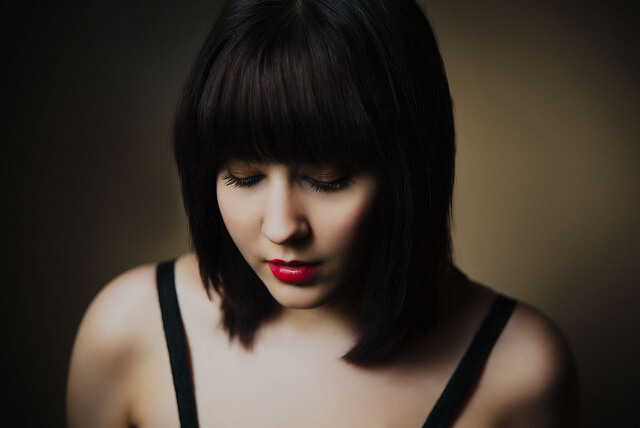
|
| [1] |
Ingredients to a hair care routine
To keep your hair healthier and looking great, there are a few specific products that can be used every week. For certain conditions or problems depending on your situation, this basic routine can then be improved by adding in other products and treatments that suit your own needs.
One of the most important products that your entire hair care revolves around is shampoo of course, and this product is always at the center of any hair care routine. Everyone needs to wash their hair, and this is best done with the right shampoo for your own needs.
Other products and treatments that can form part of an effective hair care routine include:
- Conditioner
- Leave-in conditioner
- Moisturizing treatments
- Protein treatments
- Hair serums
- Gloss
- Oils and natural treatments

|
| [2] |
Shampoo
Shampoo is the foundation of any good hair care routine because it is used every week. This means that choosing the right shampoo is very important for the overall health and appearance of your hair.
There are a lot of factors to consider when you choose a shampoo, but the oiliness of your hair is the most important factor. If you tend to suffer from dry hair and find that shampoo leaves your hair too dry even after using a conditioner, you're either washing your hair too often or using a shampoo that is too drying.
Dry hair is best washed every few days to avoid exacerbating the problem and to allow natural oils to replenish during the days where it is not washed. Depending on just how dry your hair is, you may only need to wash it every two days, or even once every three days.
The best way to judge this is to look at the appearance of your hair. Does it look oily in between washes? Does it feel oily? If this is the case, washing more often, using a stronger shampoo, or using less conditioning products will adjust for this and keep your hair in better condition. If the opposite is true, you may want to consider washing your hair less, using a leave-in conditioner, or using a weaker shampoo.

|
| [3] |
Very oily hair on the other hand, tends to make your hair look flat, full, and dirty and this can be problematic in a hair care routine. Sometimes this can be the result of a hormone problem, but most of the time it is simply natural as a result of your own individual genetics.
When your hair is oily like this, the best shampoo to use is a stronger product like a clarifying shampoo. Avoid moisturizing shampoos and other products that are designed for dry hair and wash your hair more often to keep it feeling and looking its best.
Conditioner
Conditioner is another important part of any hair care routine, and in most cases you should be applying it every time you wash your hair, after shampooing. The purpose of conditioner is to add moisture back into your hair after shampoo strips it out. Unlike natural oil though, this moisture makes hair feel smoother and keeps it from drying out without weighing it down or causing it to clump together.
Conditioner also detangles, corrects the pH after shampooing for smoother and stronger hair, helps relieve frizz, and prevents split ends. It is absolutely important that you use it after shampooing if you have dry hair, and it should only be avoided in the worst cases of oily hair where all additional moisture should be avoided.
Leave-in conditioners and conditioning treatments

|
| [4] |
If you have just dyed your hair, using these products in the week following the process can speed up your hair's recovery and relieve the problems like dryness and frizz that these chemical treatments cause. After this period, the products can be used on an as-needed basis.
For dry hair however, a leave-in conditioner can be used every time you wash your hair if necessary, and a treatment can be applied anywhere from once a week to every few days or even every time you wash your hair in place of a regular conditioner to better care for hair that is prone to dryness.
Protein treatments
Protein treatments are the absolute best repair treatment available because they repair the damaged protein that results in damaged hair. Used appropriately, these products repair hair, strengthen it, improve elasticity, and even prevent dryness and other problems that can be a result of damage.
If you don't have damaged hair however, a protein treatment isn't going to help improve the condition of your hair or make it look or feel healthier. It will only work on damaged hair and thus should only be part of your hair care routine if your hair has been dyed, bleached, permed, relaxed, or you use heat styling tools very often. Untreated hair will gain more benefit from a conditioning treatment.
To use these treatments, apply once a week after shampooing your hair and before conditioning. The product is left in for about 5 minutes depending on brand, at which point it will absorb into the hair shaft and target weak areas of your hair. After this it can be rinsed and followed up with conditioner.
If your hair is very damaged, using a protein treatment once a week may not be enough at first. In this case, you'll get quicker results by using it 2 - 3 times a week for the first two weeks until damage begins to be reversed. Following this, the treatment should be cut back to once a week. As your hair is repaired, protein treatments can be continued anywhere from once a week to once every few weeks to maintain strength and condition.

|
| [5] |
Hair serums
Hair serums are silicone based and act like a barrier. For this reason, they lock moisture into your hair following the use of conditioning products and make it feel smooth. They also reduce frizz, allow for better straightening and smoother curls when styling, and protect your hair from the effects of humidity.
Serums are an optional product for use in any hair care routine, but are a great addition where frizz and dryness is a problem, and where heated styling tools are used as they improve the results of styling whilst protecting from heat damage.
If you choose to use a hair serum, they can be applied in a few different ways, including to damp hair prior to blow drying, to dry hair before styling, or to dry hair after styling. The way you apply one of these products depends on the results you want.
 To treat dryness, use in combination with a leave-in conditioner on damp hair before blow drying. The hair serum will lock in the conditioner and reduce frizz during blow drying. To improve styling however, apply the serum to dry hair right before the use of a straightener or curling rod. For general smoothing, shine, and protection against humidity, apply to dry hair after styling.
To treat dryness, use in combination with a leave-in conditioner on damp hair before blow drying. The hair serum will lock in the conditioner and reduce frizz during blow drying. To improve styling however, apply the serum to dry hair right before the use of a straightener or curling rod. For general smoothing, shine, and protection against humidity, apply to dry hair after styling.Hair serums can be used as often as several times a day in the case of a light product and very dry hair, but in most cases they are best used only as often as you wash or style your hair.
Hair gloss
Hair gloss is a temporary treatment that can be added to a hair care routine to reduce color fading and keep your hair color looking shiny and vibrant. These treatments generally last up to 12 washes depending on brand and product and the effect will gradually fade with each shampoo.
As these treatments are temporary and don't cause damage, they can be used as often as necessary, and the best way to integrate them into your hair care routine is to apply once a month. It is best to apply the treatment after any dyeing has been completed as chemical treatments will strip the product out, and the product will work best to reduce fading and enhance the appearance of your hair color when that color is fresh.
Oils and natural treatments
Natural treatments like oils can be substituted for most of the products listed here. Conditioning products can be placed with oils like olive oil or argan oil, vinegar can help seal porous and rough feeling hair, and an egg white mask can be used as a protein treatment.
If you prefer to use natural treatments for whatever reason, these alternatives should be used in much the same way as conventional treatments, with a few differences. Oils are a slight exception because the amount you use needs to be very small as they are pure products and very heavy. Conditioner is an emulsion of oil and other emollients in water, whereas products like olive oil are pure oil.
Using natural oils for hair - Find out how to properly use and apply oil to your hair to prevent and treat dryness, reduce frizz, and improve the appearance of your hair naturally...
There is also only so much difference that natural protein treatments can make in your hair. Packaged protein treatments generally contain specific forms of protein, as well as individual amino acids, which are the building blocks of protein. These compounds are much more effective at patching up damaged areas in the keratin protein of your hair.
| Product | Usage |
|---|---|
| Shampoo | Whenever hair is oily |
| Conditioner | Every wash unless hair is very oily |
| Leave-in conditioner | Every wash - once a week or less |
| Hair serum | After washing or before styling |
| Gloss | Once a month |
| Conditioning treatment | Once a week or after every wash in place of conditioner for very dry hair |
| Protein treatment | 1 -3 times a week for very damaged hair. Once a week - once every few weeks for damaged hair or maintenance. |
More information:
- How often should you dye your hair? - Like dyeing your hair? Find out how often you should use particular types of dye to maintain color and keep damage to a minimal...
- How to get healthier hair - An overview of the most common hair conditions and how to correct them...
- Treatments for damaged hair - A look at some of the best treatments for repairing damaged and stressed hair...
Do you have a question about how to create or use a hair care routine that suits your own needs? Leave a comment for tailored advice...

No comments:
Post a Comment